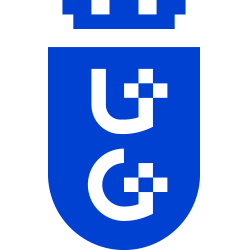
ul. Bażyńskiego 1a 80-952 Gdańsk
Polska
ISNI ID: 0000 0001 2370 4076
GRID ID: grid.8585.0
Anna Ryłko-Kurpiewska
Media Biznes Kultura, Numer 1 (2) 2017, 2017, s. 23 - 31
https://doi.org/10.4467/25442554.MBK.17.001.7648Scientific youth and maturity – media and non-media perspective
Anna Ryłko-Kurpiewska
Media Biznes Kultura, Numer 1 (6) 2019, 2019, s. 127 - 140
https://doi.org/10.4467/25442554.MBK.19.012.10714New faces of outdoor advertising. The “here” and now” communication
Anna Ryłko-Kurpiewska
International Business and Global Economy, Tom 34, 2015, s. 198 - 209
https://doi.org/10.4467/23539496IB.13.016.3989Public perception of healthcare personnel in Poland and some other European countries in view of selected studies
The paper presents current trends in the perception of healthcare in Poland and other European countries. The authors present the results of numerous surveys conducted both in Poland and abroad, which demonstrate significant changes in the way healthcare is perceived by the public in individual countries. As the diagnosis of how the medical profession is perceived in Poland gives no grounds for optimism, factors affecting its perception must be identified. This shows healthcare evaluation to be contextually-based, depending on the performance of both individual healthcare establishments and of the whole healthcare system in Poland. Demography has a heavy impact on the evaluation, as the medical services are being rated by the ageing society.
Anna Ryłko-Kurpiewska
Zarządzanie w Kulturze, Tom 20, Numer 2, 2019, s. 241 - 256
https://doi.org/10.4467/20843976ZK.19.015.10532
The paper presents current trends in the operation of cultural institutions owned by the local government. They often become similar to enterprises and implement market solutions applied by the latter. The conducted analysis has revealed modern changes in the institutions functioning in the sphere of culture, which – besides cultural and artistic activities to which they are obliged by their statutes – are also involved in undertaking educational, trading or promotional measures. Typically, cultural institutions, while operating within the framework of the state’s cultural policy as entities autonomous in terms of their legal status, organisation and finance, are subject to a dynamic transformation, ever more often extending the offer addressed to their target groups and redefining the way of their participation in culture. The activities are closely related to the definition of image identification, requiring coherence and consistency. This translates into problems with image communication, resulting from the dispersed offer, but also typical of the operation of the signs performing the functions of identification, information and utility meaning.